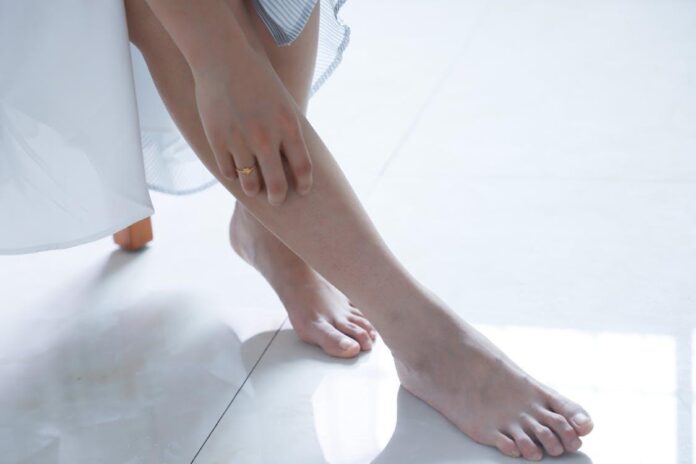Plantar fasciitis is considered as one of the most common reasons for heel pain which contains swelling of a fascia (thickest band of tissue) at the lower part of your foot and connects your heel to your toes. This condition is more common in runners. The risk of plantar fasciitis increases in people who are overweight and those who wear shoes without adequate support.

Symptoms of Plantar Fasciitis:
Plantar fasciitis usually causes intense pain at the bottom of the foot near the heel. The pain gets worse when you take your first few steps in the morning. Might also occur after long periods of standing or when you stand up after sitting. You will not feel any pain during your exercise but might occur after it.
Also Read: 10 Tips To Heel Incontinence
Plantar Fasciitis Causes:
Your fascia supports the muscles and arch of your foot and it absorbs the shock when you walk. However, tiny tears may occur if it is overly stretched due to high tension or stress and prolonged stretching and tearing may cause irritations or inflammations to the fascia.
Risk Factors:
A specific cause cannot be pointed out with regard to the development of this condition. However, there is a risk of developing plantar fasciitis due to some factors like age, obesity, exercises, foot mechanisms and occupations.

This condition is more common among people between 40 and 60 years. Plantar fascia is stress more due to being overweight and those who do certain types of exercises that put a lot of stress on the heel and attached tissues such as ballet dancing, aerobic dancing and long-distance running have a high chance of developing this condition.
Weight distribution when you are standing up can be affected due to flat feet, high arch and also unusual walking patterns resulting in putting more stress on the plantar fascia. Occupations where most of the time has to be spent standing or walking can also cause plantar fasciitis.
Also Read: The Must Use Functional Fitness Exercises & Practices
Complications:
You should not ignore plantar fasciitis because it may lead to chronic heel pain and walking in a different way to relieve the pain might later result in foot, knee or back problems.
Plantar Fasciitis Treatment:
The most basic treatment is icing the area. You can also do night splints to stretch your calf and foot overnight. You have to stop doing activities that make the pain worse and rest. Physical therapy is another good treatment method as specific exercise. It can be done to stretch your Achilles tendon and fasciato strengthen the leg muscles to make your heel and ankle steadier.
You can wear supportive shoes or inserts because shoes with thick fillet of sole. Extra padding can make it easier for you to stand or walk without feeling much pain. There are plantar fasciitis shoes available now which are designed to help people suffering from this condition and also to prevent it. Here the arch support in these types of shoes will distribute pressure more consistently across your feet.
Apart from that you can take pain-relieving non-steroidal anti-inflammatories like ibuprofen or naproxen sodium but make sure to consult a doctor first. Doctors might also recommend surgery in rare cases.
You should never ignore plantar fasciitis. Even though the pain is bearable you have to consult a doctor and start treatments as early as possible to prevent development of the condition.










